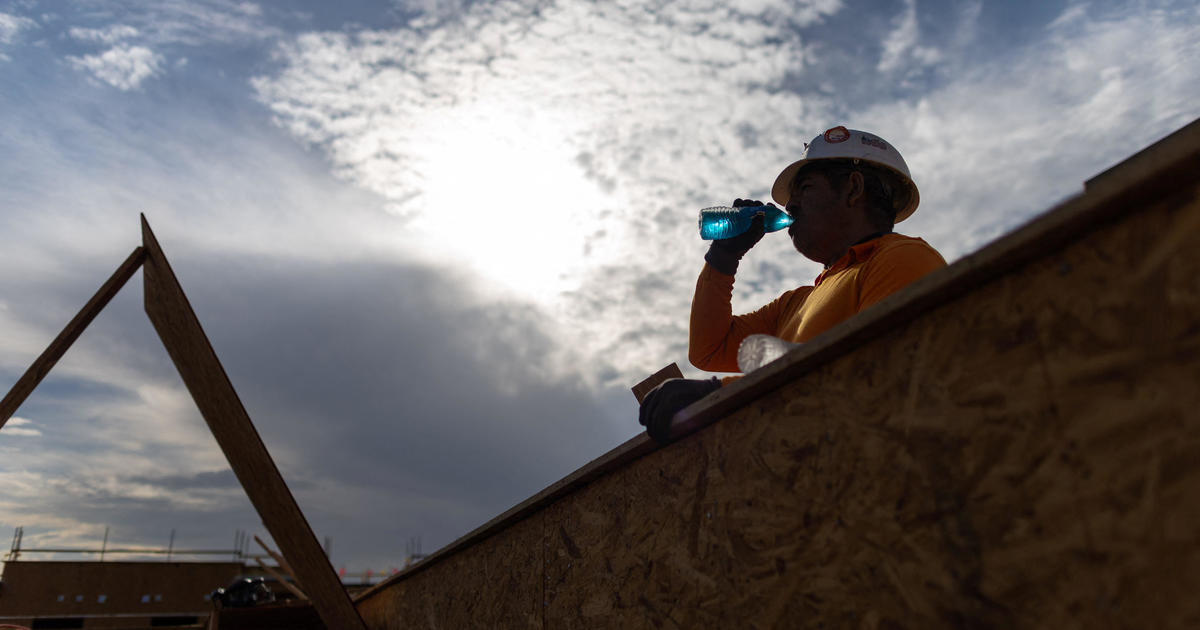Why prescription drug shortages are so costly
President Donald Trump's proposed blueprint to lower prescription drug prices has prompted plenty of speculation about the reasons behind America's outsized medicine costs. In all the analysis, however, one expensive and dangerous piece of the equation may be overlooked: chronic drug shortages.
Massive shortages of vital medicines used in hospitals and other health care facilities have become routine throughout the U.S., jeopardizing patient health, comfort and safety and, ultimately, adding to already high health care costs.
At last count, more than 200 drugs were on the shortage list compiled by the University of Utah's Drug Information Service. The most significant shortages hit generic injectable medications such as epinephrine (adrenaline), morphine and bupivacaine, a common anesthetic used in childbirth. All these have been staples in hospitals for years, even decades.
Basics such as sterile water, IV bags and saline are also in short supply. In fact, shortages have prevented 71 percent of practitioners from providing recommended drugs, according to a recent survey from the Institute for Safe Medication Practices.
The most recent shortage crisis involves injectable opioids. A perfect storm of long-standing manufacturing problems and recent government restrictions on access to raw materials in response to the opioid abuse crisis has left many cancer, hospice and emergency room patients without efficient and effective pain relief treatment, Erin Fox, senior director of the University of Utah's drug information and support services explained. Fox tracks drug shortages for the American Society of Health-System Pharmacists.
Hurricane Maria and the damage it did to drug manufacturing plants in Puerto Rico put a spotlight on the shortage problem. For months after the hurricane, U.S. hospitals and other health care facilities scrambled to find alternatives to Puerto Rican-produced IV bags that hold saline solution and are used to dilute and administer medication. Damage from the storm also disrupted the distribution of an estimated 90 other medical products and medicines produced in Puerto Rico.
But problems with shortages were already rampant before Hurricane Maria, said Fox. The real culprit is problems at mainland pharmaceutical manufacturing plants. "Most of the time, the problem is some type of quality issue related to machinery or raw materials," explained Fox. "It could be contaminated particles, bacteria, metal shavings, glass particles -- all kinds of things. There's a real quality control problem."
The majority of injectable drugs and supplies are manufactured by the country's largest pharmaceutical company, Pfizer. It's responsible for the problems with Mylan's EpiPen products, reported earlier this year, and the recent recall of two batches of naloxone, a drug used to treat opioid overdoses.
Pfizer says shipments of EpiPen products are increasing and that the company doesn't expect shortages of naloxone because it produces two alternative doses that were not recalled.
Pfizer's manufacturing capabilities jumped substantially after the drug giant acquired Hospira, the largest manufacturer of generic sterile injectable drugs. Problems plagued Hospira plants before the acquisition, and Pfizer has made some efforts to fix them. Progress is slow, however, and new problems seem to crop up continuously.
And when complications hit, not a lot of alternatives are available because of Pfizer's huge presence and the extreme consolidation in the drugmaking business, Fox explained.
"We are working hard to minimize supply shortages in the future through major investments to modernize and bring these legacy Hospira plants up to Pfizer's world-class manufacturing standards," Pfizer said in a statement, noting that it has invested $800 million in those sites and plans to inject at least another $1.3 billion. "It is important to note that the manufacture of sterile injectable medicines is an incredibly complex undertaking that requires highly sophisticated manufacturing equipment and processes, highly trained colleagues and major financial investment."
Some experts worry that not enough attention is being paid to the production of generic injectables because profit margins are slim for these common and inexpensive drugs. "These are generics that have been around 50 or 60 years and that everyone expects to have on hand," Fox said. "These are products with low margins, yes, but the companies making them have good profits. They aren't going out of business."
"You wouldn't see this happening with expensive cancer drugs," said Diana Barnard, a palliative care physician at University of Vermont Health Network, who often prescribes opioids for her seriously ill and terminal patients. As if hearing her complaint, Food and Drug Administration Commissioner Scott Gottlieb issued a statement on May 31 acknowledging the drug shortage problem and outlining the agency's plans for dealing with it. Those measures include increasing notification requirements for drugmakers so the FDA can anticipate supply problems before they hit the market.
The FDA action is welcome, said Fox, but the quest for transparency will be challenging. "Drug companies are notoriously secretive. They believe where and how a drug is manufactured is a trade secret," she explained.
In the meantime, chronic drug shortages are most certainly adding to the sky-rocketing costs of pharmaceuticals and health care in general. While patient safety and comfort are the highest concern -- imagine, for instance, what happens when an EpiPen injector doesn't work -- there's no doubt the scramble hospitals, hospices and other health care facilities go through to find alternative drugs and therapies adds to overall costs, Fox said.
She points to a study published earlier this year that shows generic drugs that experienced a shortage over the study period experienced a 55 percent price increase, compared to 44 percent for generics that didn't undergo a shortage.
In addition, a study Fox helped research back in 2011 found that personnel costs associated with managing drug shortages across U.S. hospitals added up to $216 million a year. This is time spent by physicians, pharmacists and nurses on tasks such as finding alternatives, managing dwindling inventory, informing staff and, often most onerous, adjusting facility-wide computer systems to accommodate the alternatives.
These are all tasks that take health care professionals away from patient care. "It's extraordinarily costly to deal with these shortages even if you have a good alternative," Fox said.
"It's odd," she continued, "the country that pays the most for drugs, pays for shortages. It just doesn't make sense."



